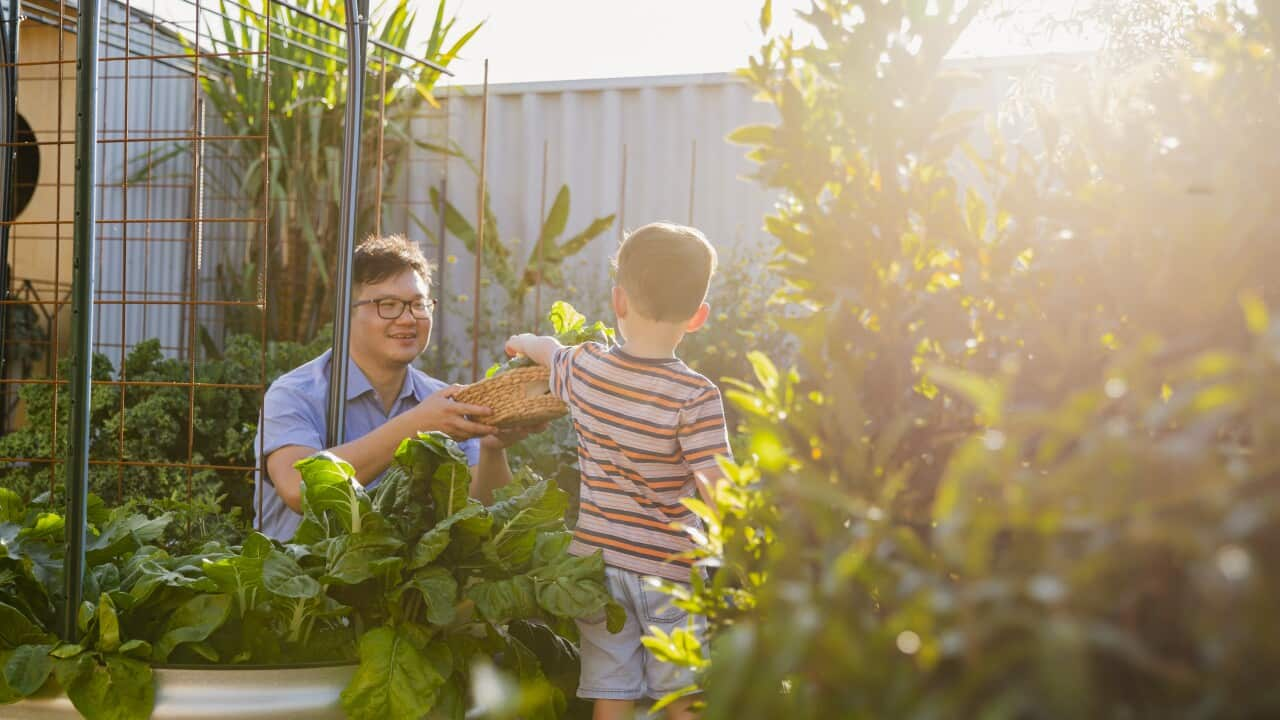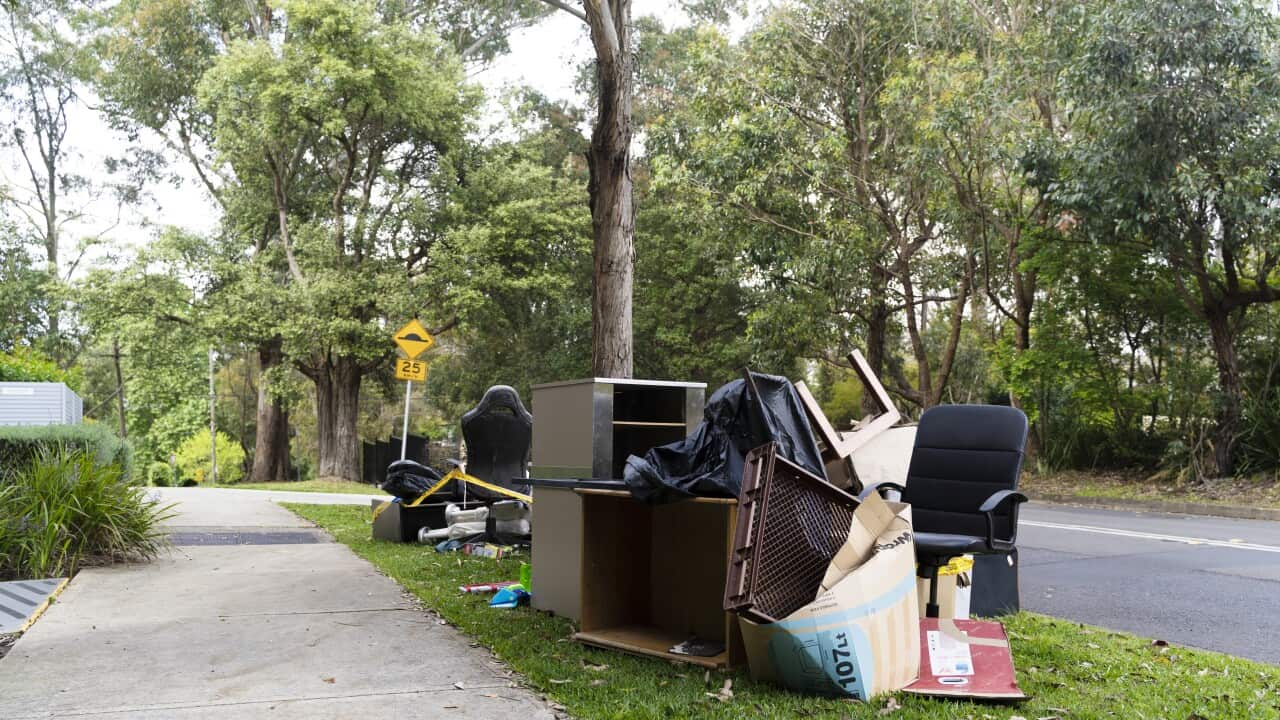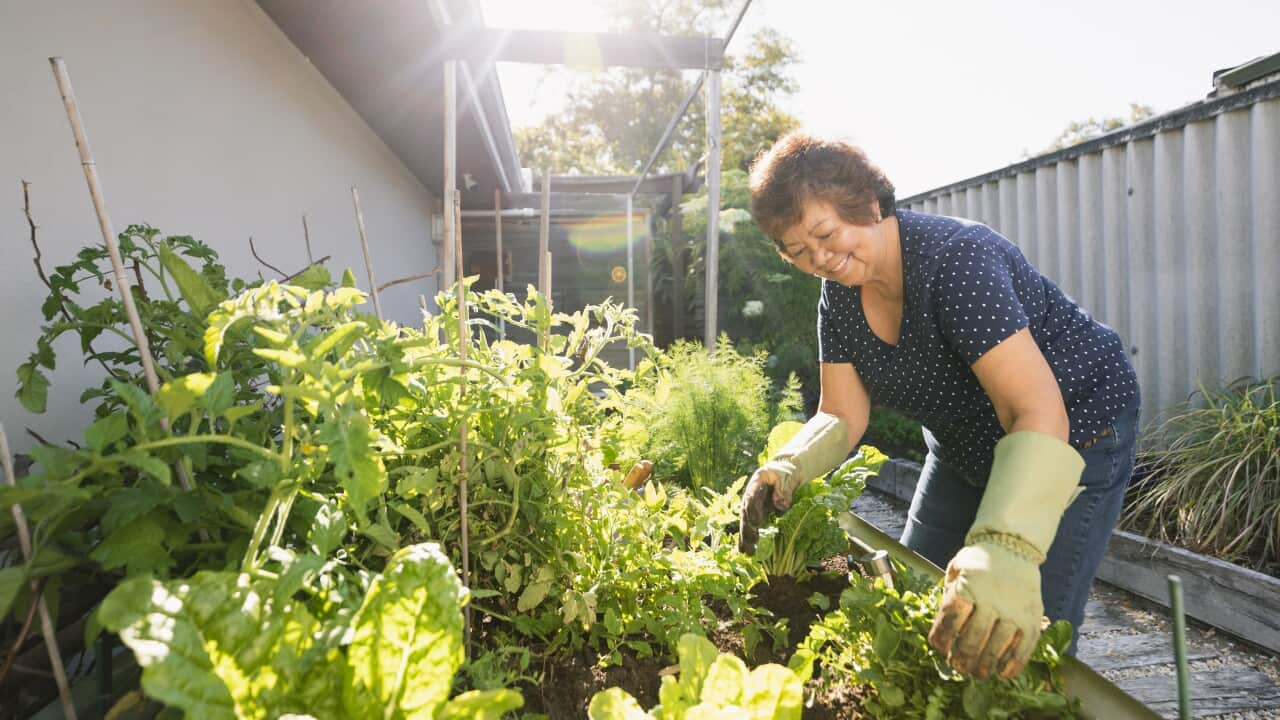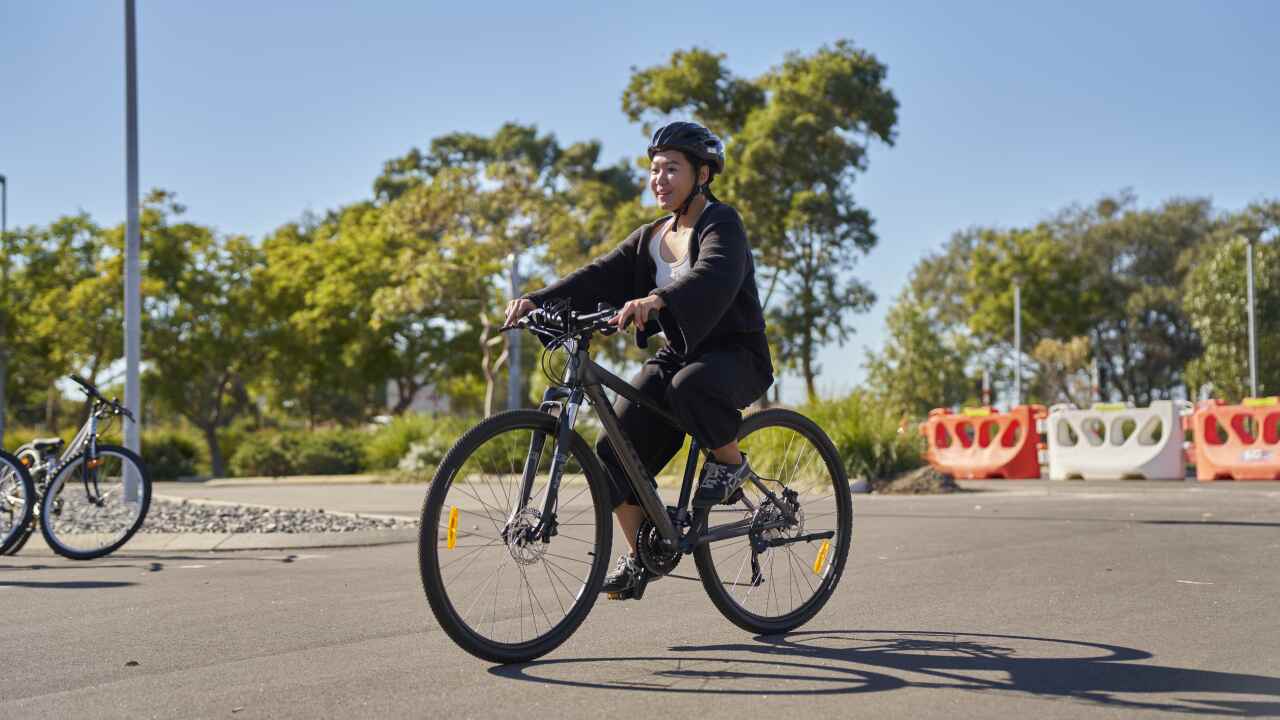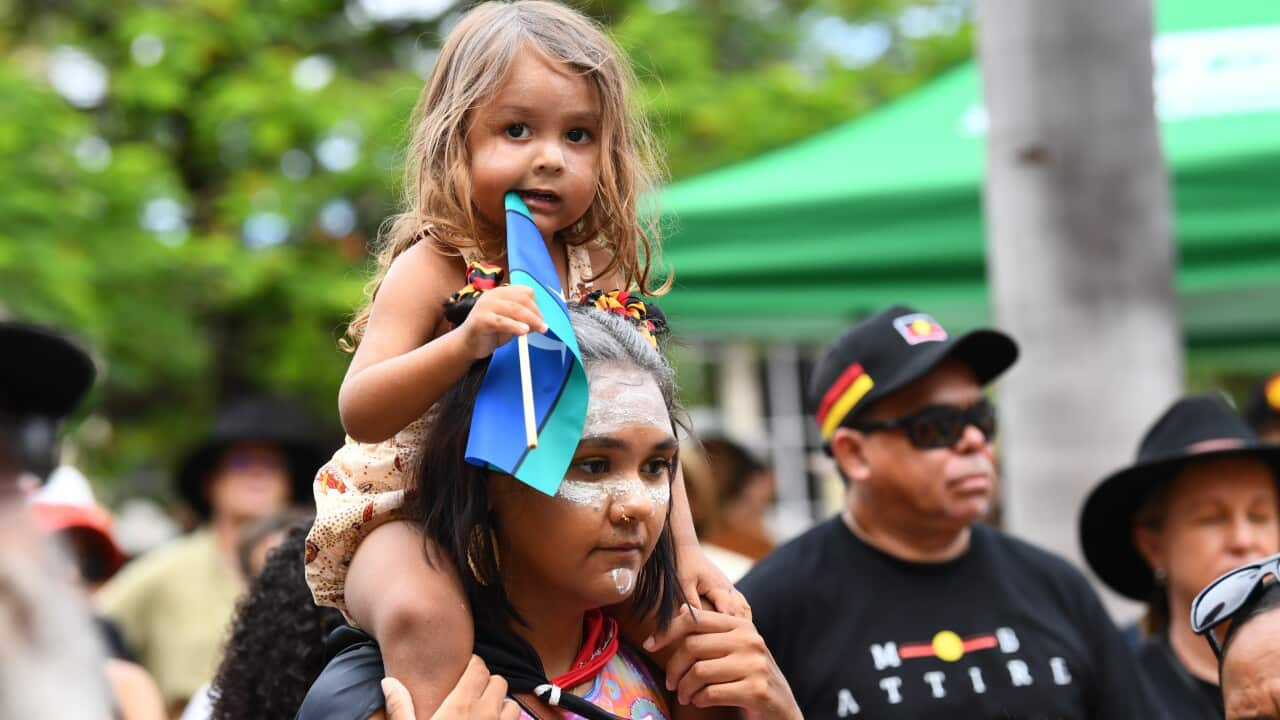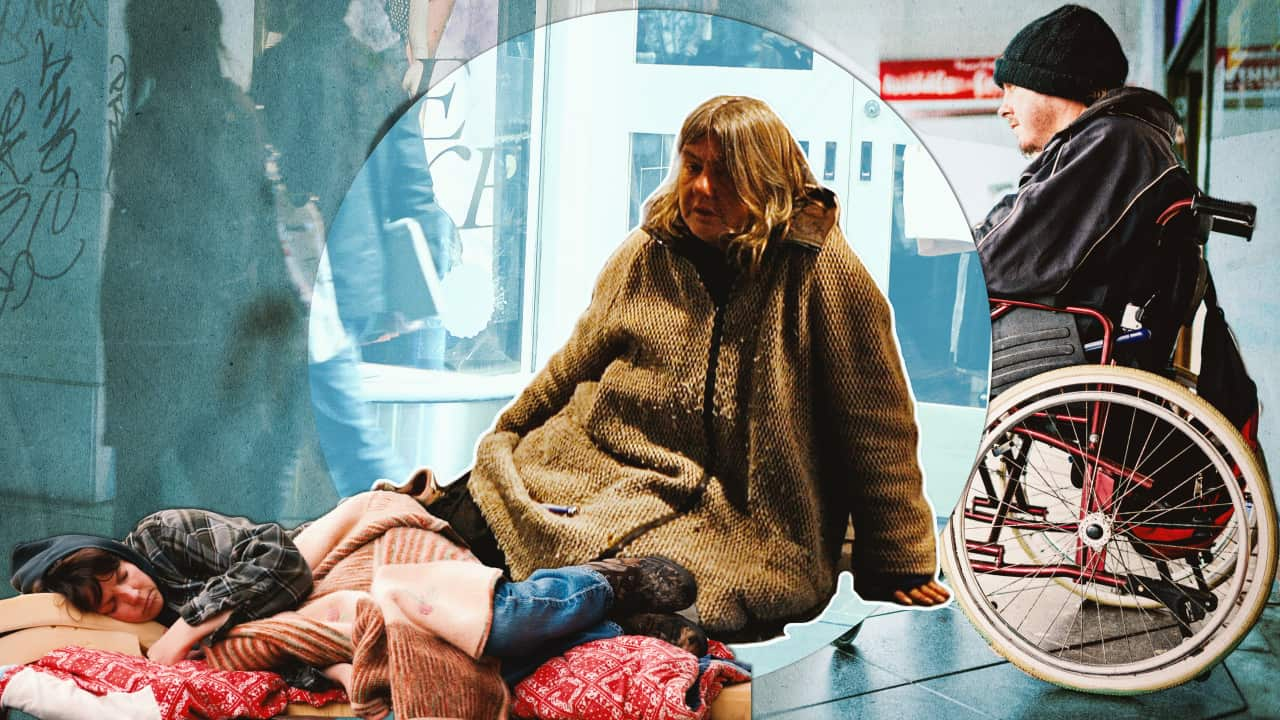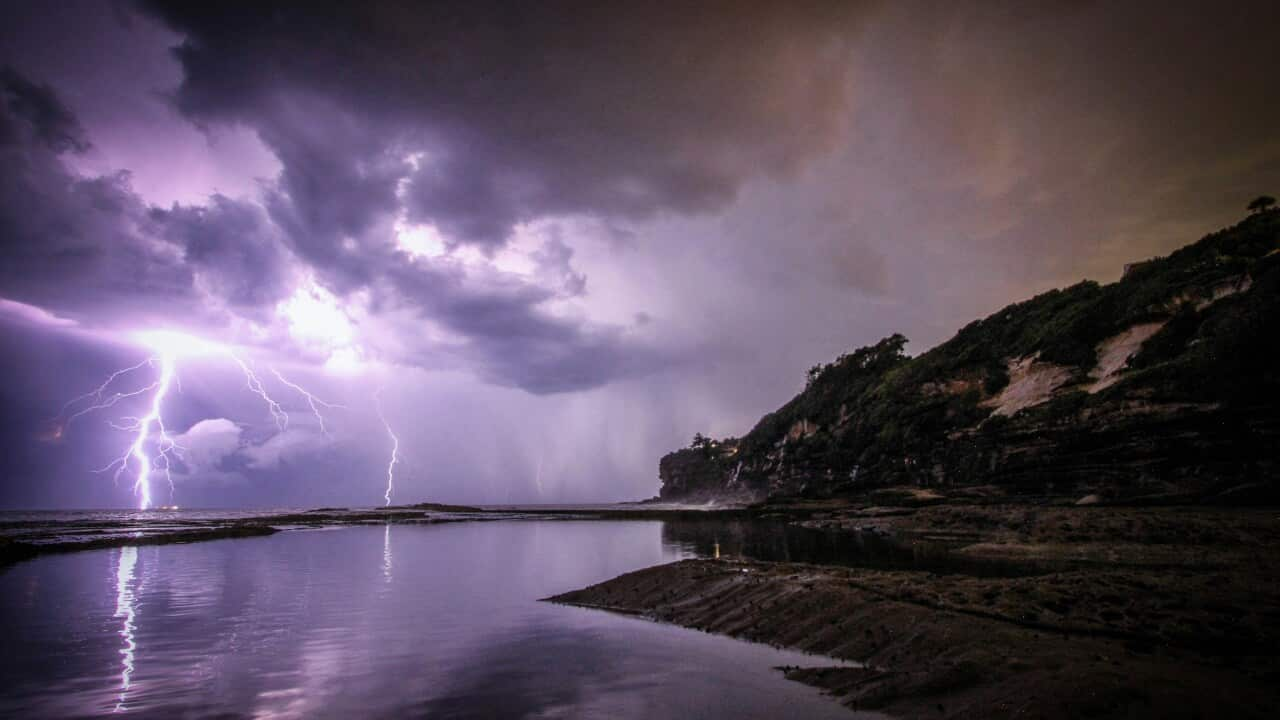Key Points
- Plants can draw you to your homeland and childhood
- Councils have Tree Preservation Orders to protect our precious urban tree canopy
- Renters must always contact their property manager prior to making major changes to the garden
The benefits of gardening and encouraging vegetation around your home are indisputable.
“There’s so much study about biophilia, which is the human connection to the outside world,” says horticulturalist Justin Calverley.
“In built-up cities we tend to move away from that, but we always know we feel a lot better when we’re surrounded by the plants in the natural world.”

Apartment block in Sydney, Australia with hanging gardens and plants on exterior of the building at Sunset. Source: iStockphoto / Elias/Getty Images/iStockphoto
But for people new to Australia there’s something special about seeing a familiar plant out of context, says Mr Calverley.
“It really draws you back to your homeland, and it’s just a comforting little nod that everything’s going to be okay.”
So many unfamiliar sights and sounds that we get in our built-up areas can be negated just by seeing, touching, smelling or even eating a plant that you’ve grown up with. Especially, that sense of smell and taste can take you right back to childhood and to your homeland. Plants and gardens can give that to you.Justin Calverley, horticulturalist

McElhone Place Surry Hills, Sydney Credit: Richard Gurney
“We get vitamin D from the sun and it’s actually what we’re built to do,” says Mr Calverley. “Light exercise, working with the earth.”
What is the urban canopy?
Open space is limited in most inner-city areas, so trees are vital for our wildlife and our community, says Marcus Pearl, Mayor of the City of Port Phillip in Melbourne.
Australian trees are protected by the Tree Protection Act and local council Tree Preservation Orders.

Melbourne tree canopy Credit: Mark Burban / Getty Images
“City suburbs have restrictions on removing significant trees in most areas, because city councils want to keep up what they call their ‘urban canopy’, which is the amount of shade and trees in their city,” says Councillor Pearl.
Councils provide guidelines in many languages about what you can and can’t do with trees located on your property.

Darlinghurst, Sydney Credit: Nina Rose / EyeEm / Getty Images
Nature strip initiatives
Port Phillip, for example, has limited open space, so locals set about improving where they live, explains Councillor Pearl.
Following community consultation, restrictions were lifted to permit planting on or in plant boxes near their homes.
What happened during COVID was quite fascinating. There was an explosion of people looking after their local neighbourhoods and that included the land out the front of their houses or their apartments, which is the nature strip.Marcus Pearl, Mayor of the City of Port Phillip in Melbourne
“We promote people doing this sort of activity in the City of Port Phillip because it has a wonderful cultural and societal benefit to everybody.”
What can renters do?
Renters are required to maintain their gardens, including mowing the lawn and pruning.
If a tenant wishes to make improvements, that’s more than acceptable, says Sydney Property Manager Iggy Damiani.
However, if they want to make major changes or plant trees that could potentially obstruct views for example, they should seek permission.
“When a tenant is making changes to the garden it’s always best to contact the property manager to make sure that the landlord is happy with the changes.”

"For migrants in Australia, there’s just something about seeing a familiar plant out of context", says horticulturalist Justin Calverley Credit: Adene Sanchez / Getty Images
“You can take them with you, you can move them into sun or shade – that’s wonderful,” says Mr Calverley. “But maybe start small. Potted gardens need to be the right plant in the right pot. So do a bit of research to make sure you’ve got the appropriate pot and mix that matches the plant.”
It is worth considering Australian native plants. Better still, indigenous plants, which are specific to a particular region.
“Ideally if you’re going to start gardening, indigenous plants will most likely give you greater success because they have evolved in your climate and in your soils.”
